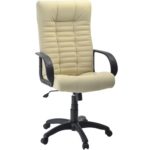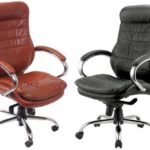Computer chair creaks, what should I do?
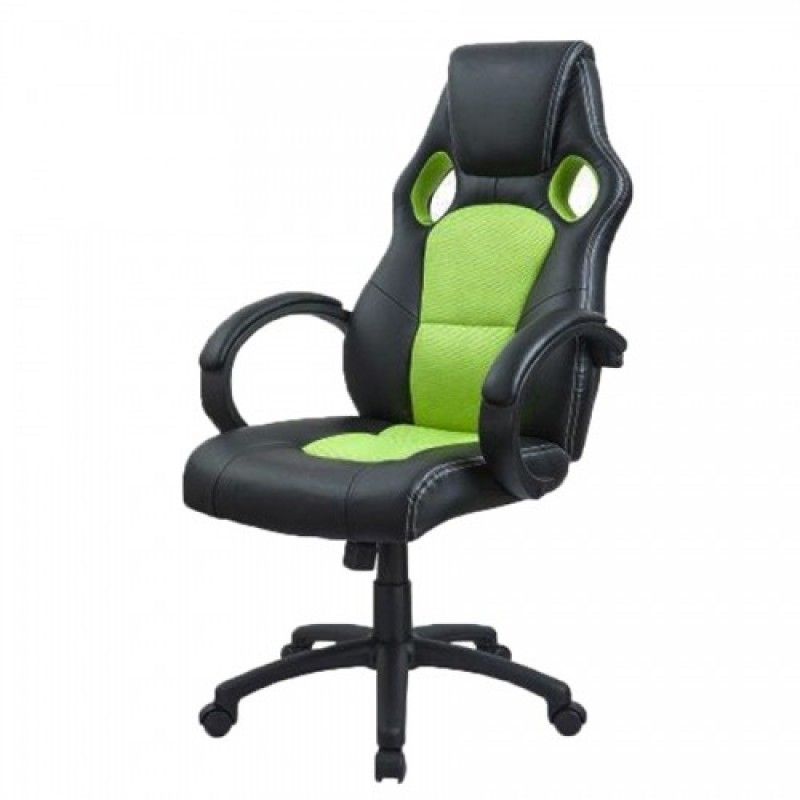 The computer chair served you faithfully, comfortably supported your back, moved silently around the room, but one day it began to creak disgustingly. This is annoying and distracts from work. But don’t rush to throw away the chair and buy a new one; most often, the problem can be corrected at home without much expense.
The computer chair served you faithfully, comfortably supported your back, moved silently around the room, but one day it began to creak disgustingly. This is annoying and distracts from work. But don’t rush to throw away the chair and buy a new one; most often, the problem can be corrected at home without much expense.
The content of the article
Reasons: why a computer chair starts to creak
- The screws between the parts were loose, or they were not tightened properly at the production stage.
- The grease that was on the bearings and joints has dried out.
- Due to poor quality parts or improper use, the mount broke. In this case, you cannot do without purchasing additional parts or the help of specialists.
- Also, the reason may be ordinary dust, which has accumulated in the cracks and prevents the mechanisms from working as expected. In this case, careful disassembly and cleaning of the chair will help.
In what places does it squeak?
REFERENCE! Before starting work, lay something on the floor if you do not want to stain it with dust.
 First, disconnect the backrest from the chair to make it easier to turn it over and inspect it. There is a large shaped screw behind the back, unscrew it and pull the back up - it will easily come off the metal guide. Now unscrew the second shaped screw under the seat and separate it from the L-shaped part.The resulting stool on wheels makes the job easier.
First, disconnect the backrest from the chair to make it easier to turn it over and inspect it. There is a large shaped screw behind the back, unscrew it and pull the back up - it will easily come off the metal guide. Now unscrew the second shaped screw under the seat and separate it from the L-shaped part.The resulting stool on wheels makes the job easier.
- If your office chair squeaks when you move, inspect the wheels. Often small debris or dust stuck in the cracks causes an unpleasant sound. Dirt can be removed with a narrow, long object or blown out using a can of compressed air.
- If a squeaking sound is heard when the chair rotates, the problem may be with the gas lift. This is the part responsible for adjusting the chair in height, torsion around its axis and the spring function (reducing the load when you sit in the chair). To inspect the gas lift, turn the chair over and locate the latch in the middle of the cross. Remove the washer by picking up the tongue, carefully remove the gas lift and lubricate the bearings, gaskets and other parts. If you still hear squeaking or clicking noises, the problem may be more serious and will require replacement. A new gas lift will still cost less than buying a whole chair.
- Many chairs have a “sore spot” - the rocking mechanism. The chair is controlled using a piastra, spring-screw or centered mechanism (you will recognize it by the protruding handle). Often the problem is a broken piastra weld. Inspect the fasteners and, if necessary, tighten the bolts with a screwdriver. It happens that after tightening, the screws quickly become loose again - here ordinary PVA glue or any other will come to your aid - pour a few drops into the gap and tighten it tightly. Do not turn the structure over until the glue has completely dried.
- When a squeak is heard from the L-shaped mechanism when changing the position of the backrest, you need to remove the side corners by picking them up with a flat screwdriver - they are connected to each other with plastic latches, so act carefully so as not to damage them.Wipe the insides with a rag, add lubricant to the spring and return the plugs to their place.
- If the armrests are loose, tighten the screws.
- Disassemble the backrest if it is the cause of the squeaking.
Instructions on how to disassemble the back of a chair
You have already disconnected the backrest from the chair and from the L-shaped part.
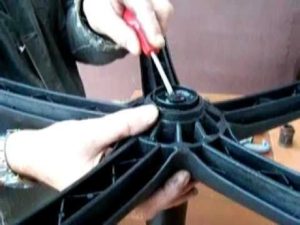 The screws you are interested in are located at the bottom of the backrest; to get to them, pull up the plastic casing or pick it up with a thin, flat object.
The screws you are interested in are located at the bottom of the backrest; to get to them, pull up the plastic casing or pick it up with a thin, flat object.
Inside, a metal insert is usually attached to a plywood frame. It is necessary to check the reliability of the fastening, tighten the screws if necessary and lubricate all suspicious places.
IMPORTANT! At any stage of disassembly, it is important not to overdo it. If something doesn't work, double-check the part for latches and screws. Otherwise, you will waste time or break off something that needed to be unscrewed.
How to lubricate a chair
- Most often it is recommended to lubricate squeaking parts with WD-40. It contains solvent and mineral oil, which facilitates sliding and protects the surface from moisture. “Vedashka” is convenient to use at home, as it is produced in the form of an aerosol and comes with a narrow long spout - for carefully applying it to hard-to-reach places.
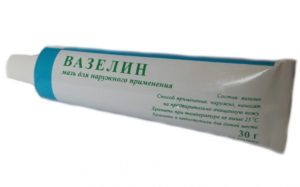 You can use solid oil or Vaseline.
You can use solid oil or Vaseline.- Any lubricant for equipment is suitable, for example, which was previously used for door hinges or a sewing machine.
- Do not take vegetable oil or cosmetics - even if there is an effect, it will not last long.
IMPORTANT! Most lubricants can have an unpleasant odor or even be toxic. Be sure to ventilate the room after using them.
Chair care
To make your refurbished chair last longer, follow a few simple rules.
- Do not swing in a chair with the swing mechanism fixed - you will destroy the gas lift, and it will not last long under such a load.
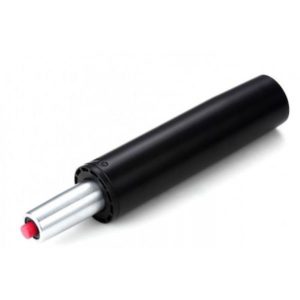 Do not sit down on the chair abruptly, in a big way, so as not to overload it.
Do not sit down on the chair abruptly, in a big way, so as not to overload it.- To clean the chair, use mild detergents to avoid damaging the parts with aggressive chemicals and accelerating their wear.
- Regularly check the reliability of the screws and add lubricants if possible, so as not to end up completely disassembling and repairing the chair.
Conclusion
Comfortable furniture for work and relaxation is not only momentary comfort, but also a matter of your health. Many problems with the spine and joints are caused by incorrect body position during the day. Be careful when choosing and caring for your work chair to avoid major problems in the future.

